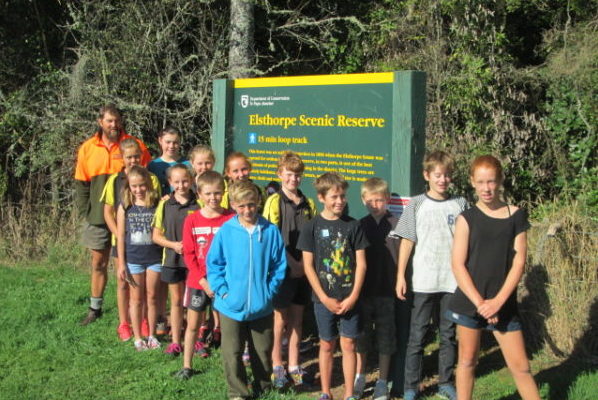In February 2015, as part of a maths project, the students of Elsthorpe School set up some possum traps in the area to see what happened. The results may surprise you…
Elsthorpe School is a small, rural school in central Hawke’s Bay with just over 40 students. It’s surrounded by beautiful reserve land that’s filled with the flapping wings of kereru and tui, and, after dark, NZ short-tailed bats. Earlier this year, with the help of local DOC ranger Dan Winchester, the students set out two A12 traps (baited with artificial lures) and four box traps (baited with chicken hearts) in the neighbouring Elsthorpe Scenic Reserve with the goal of catching possums and/or stoats.
They caught just one hedgehog in 10 weeks.
If that had been all they caught they might have given up, assuming there were no possums to catch – but they also had three plastic Timms Traps (baited with apples) that immediately terminated at least one possum a day, which grew to 32 possums over a four-week period, and resulted in over 80 possums removed by the end of the term.
School Principal Hayden Kennedy said they didn’t expect the numbers to take off the way they did.
“The kids loved it because we were getting daily hits,” he says. “They’re country kids, so they loved dealing with dead possums! They could also see their work having positive implications in the environment.”
All the data was recorded and calculated by the students. They had to map where the traps were set, figure out how many possums they were killing, and how many future possums had been prevented as a result (based on the number of females caught and their potential offspring; female possums produce 18 babies on average). Their answer: 3,240 predatorial possums prevented.
They also had to calculate how much foliage each possum had been eating (105kg or one young tree per day each, on average), and therefore how much foliage they were protecting. Their answer: 11,680 young trees saved per year.
To get the locals involved the school advertised in its newsletter, which goes out to the whole community. “People wanted to help out,” says Principal Kennedy. “They started setting Timms Traps in their own gardens, so it’s had really positive effects.”
He says DOC also came and poison baited the area a few times, but the school was still catching possums after each bait drop.
The school’s only regret, in hindsight, is not doing a bird count initially to track the results of the possum cull on their populations.
But the project will repeat itself again next year, with the addition of some bird tracking – and a stoat hunt. Principal Kennedy says something feral attacked their possum carcasses and, despite their footprint tunnels not revealing any stoat prints, he feels confident there are a few lurking around the area.
Whatever the results are next year, and he’s hoping for lower possum numbers as a sign of long-term success, he’ll be backed by an enthusiastic and dedicated group of hunters.




